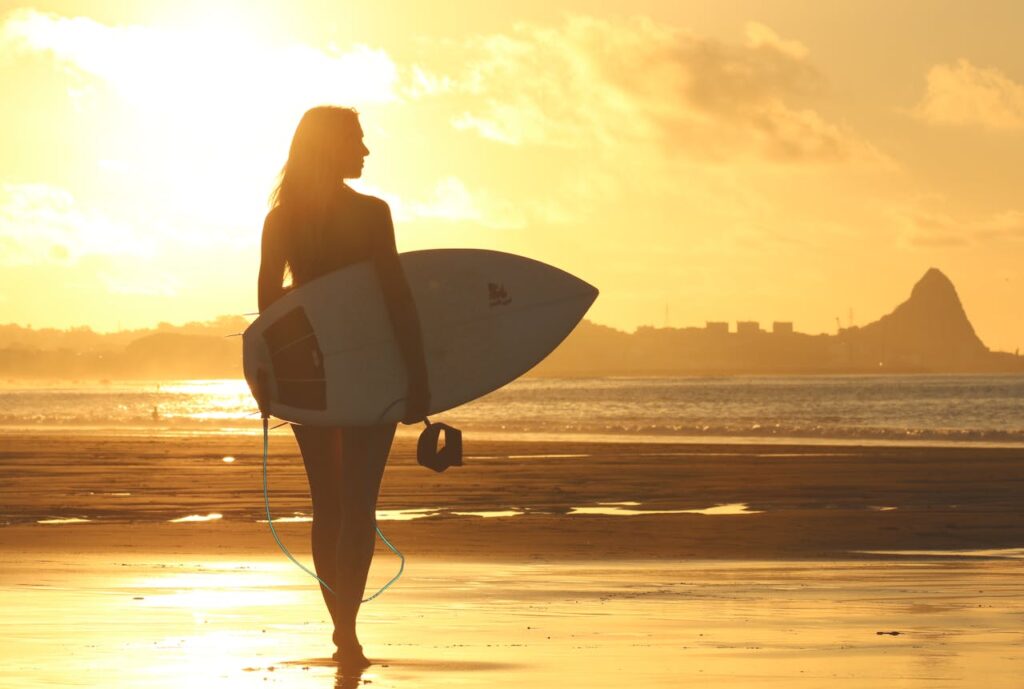Live Music Venues in Melbourne: A Guide for Music Lovers
Melbourne’s vibrant music scene is one of the many reasons the city continues to be crowned Australia’s cultural capital. Whether you’re into gritty rock gigs, smooth jazz sessions, or electronic beats that carry into the early hours, the city offers an eclectic mix of venues to suit every musical taste. From intimate laneway bars to iconic halls that have hosted global superstars, here’s a curated guide for music lovers keen to explore Melbourne’s live music heartbeat.
The Corner Hotel – Richmond
An undisputed institution in Melbourne’s live music scene, The Corner Hotel in Richmond has seen everyone from local up-and-comers to international heavyweights grace its stage. With a legendary rooftop bar, excellent acoustics, and a loyal following, it’s the go-to for catching a great gig any night of the week. Keep an eye on their schedule—you never know who might show up.

Northcote Social Club – Northcote
Nestled in the inner-north, the Northcote Social Club offers a relaxed and unpretentious vibe paired with consistently good sound. It’s a favourite among indie acts and emerging artists. With a spacious bandroom, cosy front bar, and a solid menu of pub fare, it’s an ideal spot for discovering your next favourite band.
The Night Cat – Fitzroy
The Night Cat is a unique, 360-degree venue in the heart of Fitzroy that brings a little something different to Melbourne’s music landscape. Known for its genre-diverse lineup—from funk and soul to reggae and Latin—this spot is perfect for those who love to dance. The open floor plan and immersive experience make it one of the most dynamic live music venues in town.
Howler – Brunswick
With its industrial-chic design and intimate setting, Howler in Brunswick is a modern favourite. The venue’s state-of-the-art sound system makes every show a treat, whether you’re there for a low-key acoustic session or an energetic indie band. Its adjoining beer garden and curated drink list make it an ideal hangout before and after the show.
Forum Melbourne – CBD
For those who love grandeur with their gigs, Forum Melbourne offers a truly iconic experience. Located in the city centre, this historic theatre-turned-concert venue boasts intricate architecture and a dramatic ambiance. It regularly hosts top-tier local and international acts across all genres. Whether seated or standing, every spot in the house feels like a front-row experience.
Cherry Bar – AC/DC Lane
Often referred to as “the best rock’n’roll bar in the world”, Cherry Bar is a Melbourne treasure tucked away on the aptly named AC/DC Lane. A beacon for rock enthusiasts, the venue oozes grit, authenticity, and raw energy. Even if you’re just wandering the laneways of the CBD, the lure of Cherry’s late-night sets might just pull you in.
Make a Night of It
For those planning to soak up the city’s musical offerings, Victoria offers a host of night activities in Melbourne that pair perfectly with a live show. From rooftop cocktails and after-hours galleries to late-night bites and riverside strolls, there’s no shortage of ways to round out a night on the town. Whether you’re a local Melburnian or a visitor on a cultural quest, Melbourne’s live music venues offer something for every taste and tempo. Each location has its own story, sound, and soul—ready to be discovered. So grab your mates, check the gig guides, and immerse yourself in the rhythm of the city.
What Are the Best Caribbean Islands to Visit This Summer?
Relaxing in unbleished white-sand beaches, swaying palms, and the gentle rhythm of the clear turquoise waters, with a pina colada in hand–there’s no better way to escape than with a trip to the Caribbean. A trip to that place is simply delightful.
If you’re planning a romantic getaway this summer, the region offers everything from secluded escapes to vibrant cultural hubs.
Here’s your guide to the best Caribbean islands to explore together and how to make the most of every sun-drenched moment.
Romantic Escapes: Top Picks for Couples
For those seeking romance, few destinations rival the charm of Antigua and Barbuda. With 365 beaches—one for every day of the year—you’ll have no trouble finding a quiet cove to call your own. Many luxury resorts here offer couple-friendly experiences like candlelit beach dinners and spa treatments with ocean views.
St. Lucia, with its iconic Piton mountains and lush rainforests, sets the stage for unforgettable moments. Whether you’re hiking together through tropical trails or soaking in a private plunge pool at a hillside retreat, this island blends adventure and intimacy perfectly.
Barbados brings a mix of elegance and fun. Enjoy a romantic catamaran cruise at sunset or sip rum punch as local steel bands play into the evening. Its vibrant culture, turquoise waters, and top-tier resorts make it a favourite for honeymooners and seasoned travellers alike.

Adventure and Culture: Islands with Unique Experiences
Looking to add a little adventure to your love story? Curaçao is bursting with colour—both in its Dutch colonial architecture and its incredible coral reefs. Snorkelling, diving, and street art tours bring an artistic twist to your trip.
Jamaica blends reggae, spice, and spectacular natural beauty. Hike up Dunn’s River Falls, sample authentic jerk chicken, or explore the island’s rich music legacy in Kingston.
For a truly magical experience, Puerto Rico offers one of the world’s few bioluminescent bays, where glowing waters set the scene for a nighttime kayak tour you’ll never forget.
Hidden Gems: Lesser-Known Islands to Explore
Craving peace and quiet? Guadeloupe and Saint Vincent and the Grenadines offer an off-the-beaten-path escape. With pristine hiking trails, peaceful beaches, and boutique resorts, they’re perfect for couples looking to unwind in nature and avoid the crowds.
Planning Your Dream Caribbean Getaway
When travelling from the UK, planning is key. Look for direct flights to major islands like Barbados or Antigua, or connect through the US for smaller destinations. All-inclusive resorts can simplify budgeting and maximise relaxation.
One of the best ways to experience diversity is through Caribbean cruises. With luxury amenities, seamless travel between islands, and curated shore excursions, cruises offer an effortless way to explore multiple destinations in one romantic journey.
How to plan a safe and stress-free road trip
A successful road trip isn’t just about a good playlist and a packed boot. Taking long drives through unfamiliar places can be fun and adventurous but can present challenges if you’re not ready. From knowing your route to packing the right gear, these practical tips will ensure a safe, comfortable, and stress-free journey.
Know where you’re going (and when to rest)
First of all, take time to fully plan your route before you leave. It’s not just about getting to a specific destination. Research and include rest stops, scenic points and interesting landmarks, and places to refuel the car. When you know exactly where you’re headed, you’re less likely to make rushed decisions or get caught out in unfamiliar areas.

Get your car road-trip ready?
Make sure your vehicle is completely roadworthy. Check tyre pressure, brakes, oil, and lights before setting off. In particular, have tyre treads checked to ensure that they are suitable for all the different terrains that you plan to explore. Don’t forget to bring a spare tyre, jack, and repair tool kit so you can fix your car if needed on the road. If you’re crossing borders, double-check that your insurance and breakdown cover will still apply.
Pack smart and prepare for the unexpected
Besides snacks, bottled water, medications, and device chargers, pack an emergency kit. At a minimum, take along a torch, first aid supplies, and a power bank. Remember to download any movies, music, or games for any downtime – especially if you’ll be bringing kids along.
On a long road trip, you’ll definitely run into different kinds of weather. Pack warm layers rather than bulky cold-weather clothes, and don’t forget waterproof gear.
Know local road rules before you cross borders
If you’re road-tripping across borders – whether in different countries, or different regions of the same country, look up the road rules for each place. Make note of the different laws, speed limits, and customs such as which side of the road to drive on. This is especially important in places where signage or road conditions differ from what you’re used to. You won’t want to be hit with hefty fines or penalties.
Prepare for emergencies
Even with the best of planning, accidents and breakdowns can still happen. Save essential emergency numbers on your phone – including roadside assistance, and a car accident lawyer for legal advice and support. Knowing that help is on hand will greatly reduce your stress and help keep you calm.
Rest well, drive well
Long journeys are enjoyable, but they do demand your full attention. Don’t push yourself to keep going when you’re tired – fatigue is one of the leading causes of car accidents. Take regular breaks, swap drivers if you can, and rest properly overnight if you’re on a multi-day trip.
Be smart before you hit the road
Road trips can be an exciting adventure but only if you plan ahead. From route planning to vehicle checks and knowing who to call in an emergency, the right prep will ensure that you’re all set for a memorable and stress-free adventure.
Cost-Effective Ways to Invest in Real Estate
Looking to invest in real estate? Don’t have the capital to start out with luxury condos or sprawling estates? Not a problem! There are tons of more affordable and cost-effective ways you can get started in the world of property investment right now and make a decent return on your money…
Why Real Estate Rocks for Frugal Investors
Stocks are fun, bonds are steady, but real estate carries a certain charm. You can see it, touch it, and brag about your “little empire” at dinner parties. Plus, rental income can become a reliable cash stream, and property values tend to grow over time. Even better, you can start small, learn the ropes, and scale up as you gain confidence and capital. Real estate rewards patience, research, and a willingness to roll up your sleeves.
REITs: Real Estate Without the Toolbox
Not ready to be a landlord or swing a hammer at midnight? Real Estate Investment Trusts, or REITs, let you invest in portfolios of commercial properties through the stock market. You buy shares, collect dividends, and enjoy appreciation, all without mowing lawns or screening tenants. Many REITs focus on apartment complexes, shopping centres, or office buildings. They trade like stocks, so you can buy in with as little as a few hundred dollars, diversify across regions, and exit whenever you please.
House Hacking: Live Free or Die Trying
House hacking involves buying a multi-unit property, living in one unit, and renting out the others. Suddenly, your tenants cover your mortgage, property taxes, and insurance. You live rent-free or with a tiny payment, while building equity in a growing asset. Think duplexes, triplexes, or even houses with a granny flat. Yes, you will share walls and probably some weird noises, but you’ll learn invaluable lessons in property management, maintenance, and neighbourly diplomacy.
Fixer-Uppers: When Your Inner DIY Fanatic Shows Up
If you enjoy weekend projects, a fixer-upper might be your playground. You can buy a property below market value, apply sweat equity by updating kitchens, bathrooms, and landscaping, and then either sell for a profit or raise the rent to match the improved condition. Keep in mind that renovations often cost more and take longer than you expect, so build in a cushion of time and money. If your mood swings toward frustration at peeling paint or faulty wiring, take a break, put on some music, and remind yourself that every well-placed tile adds dollars to your bottom line.
Renting Out a Room: The Original Side Hustle
Don’t underestimate the power of spare bedrooms. Platforms like Airbnb and Vrbo let you rent out extra space by the night, while long-term roommates cover months of rent. You can test demand in your market, earn extra cash, and get comfortable with the hospitality side of real estate. Just be clear about house rules, handle basic amenities like fresh sheets and coffee, and remember that positive reviews lead to repeat bookings. A tidy room and friendly welcome go a long way toward building a reputation for comfort and convenience.
Real Estate Crowdfunding: Internet Meets Property
Crowdfunding platforms have expanded beyond gadget gizmos and indie films. Sites like Fundrise and RealtyMogul allow accredited and non-accredited investors to pool money into property projects. You might back residential developments, commercial renovations, or mixed-use complexes. Minimum investments can be as low as a few hundred dollars, and platforms handle due diligence, property management, and distributions. Returns vary by project, but you gain exposure to diverse deals without the headaches of direct ownership.
Modular and Steel Buildings: Affordable Structures with Personality
When you need physical space—whether for storage, workshops, or retail—consider modular units or steel buildings. Prefabricated structures arrive on site ready to assemble, with lower labour costs and faster construction times. Steel buildings offer durability, low maintenance, and customisation options that suit light industrial, agricultural, or commercial uses. You can invest in a small warehouse or cold storage unit without the premiums of traditional construction, then lease it out to tenants who need secure, versatile space.
Tax Benefits That Make Your Accountant Smile
Real estate offers tax perks that offset many expenses. Mortgage interest, property taxes, insurance premiums, and maintenance costs are generally deductible against rental income. Depreciation allowances let you write off the building’s value over time, reducing taxable profits. When you sell, a 1031 exchange can defer capital gains taxes if you reinvest proceeds into a like-kind property. These strategies require careful record-keeping and professional advice, but they turn many costs into long-term value.
Time to start investing smarter!
How to Vacation in Style Every Year
You’ve finally made it: your vacation planning. You’ve saved up the money, done the work and booked the time off, now you just need to decide where to go. You only have so many days off so obviously you want to make the most of them, and if you’re looking to celebrate a milestone or just give yourself a big treat, why not find a vacation that combines relaxation with opulence?
1. Choosing the Right Destination: Exclusive Locations for the Ultimate Experience
Obviously, you have to have a great destination in mind. A private island or a luxury resort is definitely one way to vacation in style, and there are a variety of locations that cater to just that: the Maldives, French Riviera or Aspen are some great locations to look into if you want that VIP experience, or you can look into some more unique experiences such as private safaris or yacht charters that are sure to make your journey an unforgettable one.

2. Indulge in High-End Accommodations
You’re going to want to opt for high-end accommodation that not only has all the amenities you need, but offers privacy, comfort, security and first-class service. If there’s a large group of you, perhaps renting a villa or a penthouse might be more optimal in terms of space, whereas luxury hotels can have private chefs, spa treatments and personal butlers, so it depends what you’re looking for.
3. Exquisite Dining & Culinary Experiences
If you’re not going on vacation for some good food, you’re missing out. A key part of a luxury experience is the top-tier culinary experiences that you just can’t miss out on; make sure to look to Michelin-starred restaurants or consider booking a private dining experience with a renowned chef to add an extra special touch to your vacation.
4. Luxury Travel Experiences: Yachts, Private Jets & Beyond
If you’re really looking to travel in style: private jets, yachts and helicopter tours can add a level of comfort and privacy that will make your relaxation unparalleled. You can really just sit back and trust in the experts – and chartering a yacht means you can still have all the privacy and luxury of a Mediterranean break without leaving the US. If a yacht vacation becomes a family tradition it might become worthwhile to invest in a yacht yourself so you can have the luxury whenever you want a moment away from the hustle and bustle…but it’s worth trying it out first!
Get Your Mum Personalized Blanket This Mother’s Day – A Cozy Gift That She’ll Cherish!
Mother’s Day is just around the corner, and it’s time to think about what truly makes your mum feel special. A personalized blanket is not just a gift; it’s a heartfelt way to show her how much you care. By choosing a unique design that reflects her personality, you can create a warm and personal keepsake that she will cherish for years.
Imagine her wrapping herself in a cozy blanket adorned with family photos or a meaningful quote that resonates with her. This thoughtful gesture adds a personal touch that ordinary gifts simply can’t match. Personalized blankets are not only practical but also serve as a constant reminder of your love.
Don’t miss the chance to make this Mother’s Day unforgettable. A personalized blanket will add warmth to her day, literally and figuratively. It’s a simple yet impactful way to celebrate the amazing mum in your life.
Why a Personalized Blanket Makes the Perfect Mother’s Day Gift
A personalized blanket offers both comfort and a heartfelt touch that can transform your gift into a cherished keepsake. The combination of practicality and emotional significance makes it a standout option for Mother’s Day. A personalized blanket can transform any chilly evening into a cozy retreat. CanvasDiscount.com can do this for you. And the best part is, they are also giving away a voucher code (HAPPY15 – 15%) off on top of any active sale.

Combine Comfort With Memories
Imagine your mom snuggling up in a soft, warm blanket that features cherished family photos or sweet messages. A custom photo blanket brings nostalgia into the mix, allowing you to capture special moments.
With options like a cozy sherpa blanket, your gift does not just look good; it feels good too. Every time she wraps herself in it, she’ll remember the love you shared.
It’s a comforting reminder of family gatherings, vacations, or milestones that mean the most. You’re gifting more than just fabric; you’re offering warmth and a connection to lasting memories.
Exceptional Quality That Tells a Story
When choosing a personalized blanket, quality matters. A well-made blanket not only enhances its aesthetic appeal but also increases its longevity. Look for options that use durable materials to ensure that it stands the test of time.
A photo blanket made with care can withstand countless washes and everyday use. As its colors stay vibrant, the stories it tells through its design will also remain alive.
Opting for high-quality, soft fabrics will make each cuddle session a pure delight. Whether it’s for keeping warm on chilly nights or adding a special touch to her living space, this blanket narrates a unique story that celebrates your bond.
How to Create Your Custom Blanket
Creating a personalized blanket for Mother’s Day is a fun process. You can make it unique by choosing a photo, selecting the right material, and adding special touches.
Choosing the Right Photo
Start by selecting a photo that holds meaning. This could be a family portrait, a candid moment, or a favorite vacation picture.
Tips for Choosing a Photo:
- Ensure the image is high resolution for clarity.
- Consider the colors in the photo; vibrant images often look better on fabric.
- Think about the square or rectangular layout for the blanket’s design.
Once you choose the right photo, make sure it captures personal memories and brings joy. This is a key part of making your custom blanket truly special.
Selecting the Blanket Material
The material you choose affects both comfort and appearance. For a warm and cozy option, consider a sherpa blanket. These are soft, fluffy, and perfect for snuggling.
Blanket Material Options:
- Fleece: Lightweight and machine washable, ideal for everyday use.
- Sherpa: Extra soft, great for chilly evenings.
- Cotton: Breathable and durable, perfect for year-round comfort.
Each material offers unique qualities, so pick one that aligns with your mum’s preferences.
Adding a Personal Touch
Personalization elevates a blanket from ordinary to extraordinary. Think about adding a name, a special date, or a meaningful quote.
How to Personalize:
- Use embroidery or printing for names and dates.
- Choose a quote that resonates with your family.
- Illustrate it with small graphics like hearts or flowers.
These added details make the blanket unique. They also show the thought you put into this special gift, enhancing the emotional value.
Delivery and Customer Service Information
When ordering a personalized blanket for Mother’s Day, knowing about delivery and customer service is essential. You’ll want to be informed about shipping costs, delivery times, and the support available should you have questions.
Understanding Shipping Costs and Times
Shipping costs vary depending on your location. In the United States and Canada, rates typically start at $5.99, but can increase with faster options.
For standard shipping, expect delivery within 5 to 10 business days. If you’re in a hurry, express shipping is available and usually delivers within 2 to 3 business days.
Be sure to check the estimated delivery date at checkout. This way, you can ensure your mom gets her gift on time!
Rely on Exceptional Customer Support
Customer service plays a crucial role in your shopping experience. If you have questions or need assistance, most companies offer support via email, live chat, or phone.
With 24/7 availability, you can reach out anytime. They typically aim to respond within 1 business day. Make sure to have your order number handy for quicker assistance.
Many companies also provide FAQs on their website, covering common inquiries related to shipping, returns, and refunds. It’s a good idea to check these out for immediate answers.
Making the Most of Your Purchase
To truly enjoy your personalized blanket, it’s essential to care for it properly. Additionally, knowing when to recommend it to others can amplify its value. Here’s how to make the most of your purchase.
Caring for Your Personalized Blanket
Taking good care of your blanket ensures it remains a cherished item for years to come. Follow these tips:
- Washing: Use cold water and a gentle cycle to preserve the fabric and print.
- Drying: Air dry is best, but if you use a dryer, opt for low heat to avoid damage.
- Storage: Keep it in a dry, cool place when not in use to maintain its quality.
When to Recommend to Friends and Family
If you have a friend or family member looking for a thoughtful gift, this blanket is an ideal suggestion. Consider recommending it when:
- They mention wanting to add a personal touch to their home.
- You hear them talk about needing extra comfort, especially during colder months.
- They’re searching for a unique gift for any special occasion.
Conclusion
Choosing a personalized blanket for your mum this Mother’s Day is a thoughtful way to show you care. It adds a unique touch that can make her feel special.
When selecting a blanket, consider these key points:
- Material: Look for soft, cozy fabrics like fleece or cotton.
- Size: Make sure it fits her needs, whether for snuggling on the couch or keeping warm in bed.
- Design: Personalize it with a beloved photo or a meaningful quote.
A customized blanket is not just a gift; it’s a keepsake. It offers warmth, comfort, and a constant reminder of your love.
This Mother’s Day, give her something that speaks to her heart. A personalized blanket is perfect for any mum who loves a cozy touch at home. She’ll cherish it for years to come.
The Unseen Struggles of Long-Term Travel No One Talks About
Long-term travel might look like an endless adventure from the outside, and don’t get us wrong, it often is, but there’s a side to it that rarely gets airtime. Beneath the postcards and palm trees are the not-so-Instagrammable moments: burnout, decision fatigue, budget wobbles, and a constant shuffle of goodbyes. If you’ve been there, you’ll know. And if you’re just starting out, well, we’re here to let you in on what it really feels like to live out of a backpack for months on end.
Always Moving, Never Settled
Bouncing from city to city might sound glamorous, but after a while, it starts to feel like Groundhog Day. Every new place means figuring out a new transport system, finding the nearest grocery store, and relearning how to say “Where’s the bathroom?” in another language.
And the truth is, being in constant motion is tiring. There’s no steady rhythm. One minute we’re loving the chaos, the next we’re lying on a hostel bunk wondering why we’re so emotionally fried.
Here’s what helps us stay sane:
- Sticking around longer in one spot to actually feel the place
- Creating little routines, even if it’s just morning coffee and journaling
- Ditching the pressure to “do it all” every single day

Freedom Overload Is Real
It’s wild how stressful “total freedom” can be. When every path is open, how do you know which one to take? Should we head to the beach town with epic surf, or the mountain village with that cool hike? What if we miss something better?
Eventually, decision fatigue kicks in. We’ve spent way too long frozen over flight comparison sites. It’s not pretty.
What keeps us grounded:
- Choosing a theme for a trip (culture, food, hiking) to narrow down choices
- Accepting that we will miss some things, and that’s okay
- Rolling with the unexpected, which is usually where the best memories are hiding
Budgeting: Guesswork in Disguise
“Travel on a budget,” they said. “It’ll be easy,” they said. But no one warned us about the surprise visa fees, broken phones, or the mysterious ATM charges that eat away at our funds like digital termites.
One month you’re living off $10 a day, the next you’ve accidentally spent your grocery money on overnight buses and laundry tokens.
Lessons we’ve learned (the hard way):
- Always have a backup stash of cash, ideally not in your sock
- Don’t rely solely on travel blogs for budgeting advice, prices change
- Give yourself a break when you go over, it’s part of the ride
The Hello-Goodbye Whiplash
We meet the most amazing people, then say goodbye to them days later. It’s emotional whiplash. One minute you’re bonding over street food in Hanoi, the next you’re waving them off at a bus terminal in tears.
Yes, it’s beautiful to connect with people from all over the world. But those constant goodbyes? They wear on us.
How we cope without turning into emotionally unavailable nomads:
- Stay in touch when it feels right, don’t force every connection to be forever
- Enjoy the moment without worrying about the ending
- Remind ourselves that the world is small and travel reunions do happen
Health on the Road: Easier Said Than Done
Let’s be honest. Some days, our diet is 70% street food and 30% hostel snacks. Exercise? Well, we hiked to the top bunk, does that count?
It’s hard to prioritise wellbeing when routines don’t exist and your “gym” is a dirt road somewhere in rural Laos. But health catches up with us, so we’ve had to get creative.
What works for us (most days):
- Walking everywhere, it’s good for the wallet and the waistline
- Eating fresh when possible, but not beating ourselves up over the odd pizza
- Keeping mental health in check by slowing down when we need to
The Not-So-Glamorous Side of Backpacking: Managing Sweaty Feet on the Road
Let’s be real—travel can get messy, and so can our feet. Between tropical heat, endless walking, and wearing the same shoes day after day, it’s no surprise that sweaty feet are a common travel woe. It’s not exactly dinner table conversation, but it can seriously mess with your comfort (and confidence) on the road.
The good news? There are simple ways to manage it:
- Rotate your shoes when possible to let them fully dry out
- Pack moisture-wicking socks (ditch the cotton, trust us)
- Give your feet a break—air them out during rest stops or whenever you’re off your feet
- Use foot powders or antiperspirant sprays designed for feet—they really do help reduce moisture and odour
For most of us, a little extra care goes a long way. But if you find your sweaty feet are persistent, excessive, or starting to affect your day-to-day comfort, it might be more than just hot weather. In that case, it’s worth checking in with a specialist. There are treatments that can help, and it’s always better to know your options than to keep struggling in silence.
Bottom line? Your feet carry you through every adventure. Take care of them—they deserve it.
The Admin We All Dread
We’ve lost count of the number of visa websites we’ve squinted at. One said 30 days, another said 60. Guess who still got fined at the airport? Yep. Us.
There’s nothing glamorous about border crossings, surprise exit taxes, or trying to book flights on dodgy hostel Wi-Fi. But it’s all part of the game.
Our go-to tricks:
- Double-check info from official sources, not Karen’s travel blog from 2016
- Screenshot everything, you never know when you’ll need it
- Give yourself grace when things go sideways, they often do
That Awkward Feeling of Wanting to Go Home
We’ve all been there. Sitting alone in some dreamy spot, wondering why we’re not feeling it. Missing our friends, our bed, or just our own kitchen.
But here’s the deal. Needing a break from travel doesn’t mean you’re doing it wrong. It means you’re human.
What we’ve learned to embrace:
- Going home for a bit if you need to, there’s no prize for staying on the road forever
- Changing plans without guilt, flexibility is the actual travel superpower
- Doing what feels good in the moment, not what you think you should do
It’s Not Always Pretty, But It’s Worth It
Long-term travel isn’t just sunsets and smoothies. It’s uncertainty, adaptation, growth, and sometimes just a lot of dirty laundry. But it’s real. And raw. And deeply rewarding.
So if you’re out here struggling to stay afloat between hostel rooms and visa offices, know you’re not alone. We’ve felt it too. And we’re right here with you, figuring it out one beautiful mess at a time.
Let us know your own unseen struggles. Because the more we share, the easier it gets for all of us to keep going, honestly and with a little humour too.
How to Keep Your Skin Happy While Travelling
It can be difficult to settle on a skincare routine that really works for you. If you’re often moving from place to place, then this difficulty can be compounded. What’s effective in one climate might be less effective in another. And then there are the practical problems that stem from taking the required products, and sticking to the routine.
Prepare Your Skin Before Departure
Any semi-regular skin treatments should be performed shortly before you depart. This includes exfoliation. If you scrub away all of the dead skin cells that might potentially clog your pores and cause other skin problems, then your skin will be in a better position to absorb moisturizers and hydrating products.
Those with sensitive skin might want to exercise caution when it comes to exfoliation, however, as too much scrubbing can lead to soreness and inflammation. The better you know your skin, the better you’ll be able to judge how much to exfoliate.

Simplify Your Skincare Routine with Multi-Use Products
At home, you might apply a sequence of highly specialised products. When you’re travelling, however, this can be a lot of effort to go for. A better approach might be to use skincare products that perform several different functions with a single application. These might include moisturizers that also tint your skin, and protect it from the sun. For those with oily skin, products that contain salicylic acid for skin can be hugely effective.
Maintain Hydration Inside and Out
One of the reasons that air travel can be so bad for the skin is that cabin air on a commercial airplane can be extremely dry. This is because the air at cruising altitude is dry to begin with, and the ongoing process of keeping the cabin pressurised tends to reduce moisture further. This has a number of effects – including making a Bloody Mary taste better. But it will also dry out your skin.
Drinking plenty of fluids while airborne, and applying a hydrating moisturizer, can help to limit the effects of these problems.
Protect Your Skin from Sun Exposure
If you’re travelling through a particularly sunny part of the world, then UV protection might be a priority. Look for a sunscreen that protects against a broad spectrum of ultraviolet wavelengths. Apply it generously. A broad-rimmed hat can also be extremely useful!
Prioritize Rest and Manage Jet Lag
Travel can often be highly disruptive of sleep. Getting on top of jet lag by planning your sleep cycles in advance can help minimize this. You might also look for special products designed to stimulate the body. Eye creams with caffeine in them, for example, can reduce puffiness and the look of fatigue.
How to Handle the Aftermath of a Car Accident: A Step-by-Step Guide
The screech of tires, the sickening crunch of metal, and suddenly your day has taken a dramatic turn. Car accidents happen in an instant but dealing with the aftermath can take weeks or even months.
Whether it’s a minor fender-bender or a serious collision, knowing exactly what to do following an accident can make all the difference in protecting your health, legal rights, and financial security.
This article will walk you through the key steps to take after a car accident. It covers everything from staying safe to handling insurance claims and seeking legal help. By following these steps, you’ll be better prepared to protect your health, rights, and finances after an accident.
Step 1: Ensure Safety and Call for Help
Your first priority after an accident should always be safety. Check yourself and your passengers for injuries before doing anything else. If it’s safe and possible to do so, move your vehicle to the shoulder or another safe area away from traffic to prevent additional collisions. Turn on your hazard lights to alert other drivers.
Call 911 immediately, even if the accident seems minor. Police documentation is crucial for insurance claims and potential legal proceedings. When speaking with emergency operators, clearly communicate your location and whether there are any injuries requiring medical attention. Stay on the line until they instruct you to hang up.
Step 2: Document the Scene
In today’s digital age, your smartphone is one of your most valuable tools following an accident. Take multiple photos from different angles showing:
- All vehicles involved, including license plates
- Visible damage to all vehicles
- The overall accident scene, including the positions of the vehicles
- Skid marks or debris on the road
- Traffic signals, stop signs, or road conditions that may have contributed
- Weather conditions (if relevant)
Don’t forget to exchange information with all parties involved. Collect:
- Full names and contact information
- Insurance company names and policy numbers
- Driver’s license numbers
- Vehicle make, model, and year
- License plate numbers
If there are witnesses, politely ask for their contact information as well. Their perspective may prove invaluable later, especially if there are disputes about how the accident occurred.
Step 3: Don’t Admit Fault
In the confusion and stress following an accident, you might feel compelled to apologize or accept blame. Don’t. Even saying something as innocent as “I’m sorry” or “I didn’t see you” could be interpreted as an admission of fault.
When speaking with the other driver, police officers, or insurance representatives, stick to the objective facts. Describe what happened without speculating about cause or responsibility. Let the investigation determine fault based on evidence rather than statements made in the heat of the moment.
Remember that fault in accidents is rarely straightforward. Multiple factors often contribute, and determining legal responsibility requires careful analysis beyond what’s apparent at the scene.
Step 4: Seek Immediate Medical Attention
Some injuries may not be obvious right away. Adrenaline can hide pain, and injuries like whiplash or internal bleeding might not show up until later. It’s important to see a doctor or go to the emergency room right after an accident, even if you feel okay.
This helps protect your health and creates medical records linking your injuries to the accident, which is crucial for insurance claims or legal cases.
Keep detailed records of:
- All medical visits and treatments
- Prescribed medications
- Doctor’s recommendations and restrictions
- How injuries impact your daily life
These notes can strengthen your claim and help prove the full impact of the accident on your health and lifestyle.
Step 5: Report the Accident to Your Insurance
Contact your insurance company promptly, but be strategic about what you share. Most policies require timely reporting of accidents, but you don’t need to provide extensive details in your initial call.
Provide basic information about when and where the accident occurred and who was involved. However, avoid:
- Speculating about fault
- Giving recorded statements without legal counsel
- Discussing your injuries in detail before being fully evaluated
- Accepting settlement offers before understanding the full extent of damages
Your insurance company isn’t necessarily your advocate. Their primary goal is to resolve claims as cost-effectively as possible—which may not align with your best interests.
Step 6: Consult with a Lawyer
For minor accidents with no injuries and clear liability, you might not need legal representation. However, consulting with a personal injury attorney is advisable if:
- There are significant injuries
- Fault is disputed
- Multiple parties are involved
- The insurance company is pressuring you for statements or quick settlements
- You’re missing work or have substantial medical bills
Most personal injury attorneys offer free initial consultations and work on a contingency basis, meaning they only get paid if you receive compensation. This makes legal advice accessible regardless of your financial situation.
Step 7: Review Your Insurance Policy
Your liability coverage limits, which pay for damage you cause to others Collision coverage for repairs to your vehicle Medical payments or personal injury protection benefits Uninsured/underinsured motorist coverage Rental car provisions and transportation expenses
Don’t hesitate to ask your insurance agent to explain any confusing aspects of your policy. Knowing exactly what’s covered and what isn’t, helps set realistic expectations about financial responsibility.
Step 8: Keep Track of Expenses
From the moment of impact, start documenting every expense related to the accident. Create a dedicated folder (physical or digital) containing:
- Medical bills and receipts
- Vehicle repair estimates and invoices
- Rental car costs
- Transportation expenses to medical appointments
- Documentation of missed work and lost income
- Property damage beyond your vehicle
- Costs for help with daily activities you can no longer perform
These records will be crucial when calculating the total impact of the accident and ensuring you receive appropriate compensation.
Step 9: Be Cautious of Early Settlement Offers
Insurance companies often offer quick settlements before the full extent of injuries and damages is known. These initial offers typically represent the minimum amount they believe might resolve your claim—not the maximum you’re entitled to receive.
Before accepting any settlement:
- Ensure you’ve reached maximum medical improvement or understand your long-term prognosis
- Calculate all current and future medical expenses
- Account for lost wages and diminished earning capacity
- Consider pain, suffering, and quality of life impacts
Once you accept a settlement, you typically waive the right to seek additional compensation, even if your condition worsens.
Step 10: Follow Up on Recovery and Legal Process
Recovery from an accident involves physical healing, emotional processing, and navigating legal and insurance challenges. Stay actively engaged in all aspects:
Attend all medical appointments and follow treatment plans diligently. Keep your attorney informed about your recovery progress and any changes in your condition. Respond promptly to requests for information from your insurance company or legal team. Document any new expenses or complications that arise.
If you need a Boston Car Accident Lawyer, DiBella Law Injury and Accident Lawyers is the best choice. They offer a free consultation and work on a contingency fee basis, meaning you don’t pay unless they win your case.
Conclusion
The aftermath of a car accident can feel overwhelming, but approaching it methodically, step by step, can significantly reduce stress and improve outcomes.
By prioritizing safety, documenting thoroughly, seeking appropriate medical care, and understanding your legal rights, you position yourself for the best possible recovery in all senses of the word.
Remember that you don’t have to navigate this challenging time alone. From medical professionals to legal experts, support is available to help you through each phase of the process. Taking the right actions now can make all the difference in your physical recovery, financial security, and peace of mind moving forward.
How to Celebrate Your Anniversary While Traveling
When you’re in a long-term relationship, it’s worth pausing to reflect as you pass significant milestones. Anniversaries can be marked with a quiet night in – but making the occasion truly special often means spending a little (or a lot) on a vacation. Overseas trips have long been a great opportunity for a romantic gesture such as exchanging promise rings, and anniversaries might be a good match for the same reasons.
But how can you get the best from an anniversary celebration while you’re travelling? Let’s take a look at a few tips.
Choose a Destination That Resonates with Your Relationship
To begin with, your chosen destination should resonate with you as a couple. This might mean picking out a location with special personal significance. It might be that a particular part of the world appeals to you because of the memories it evokes. Or, you might have always wanted to visit a destination from your shared bucket list. Often, the fact that a particular destination has been a topic of discussion can help it to provoke the required sense of togetherness and nostalgia.

Plan a Unique Experience Together
Simply getting to a city and seeing the sights might be enough for you. But in most cases, booking the right activity can help to make a given trip more memorable. You might take to the skies in a hot air balloon, or spend an afternoon learning how to cook a perfect lasagne from an esteemed chef in Bologna.
Pick an experience that appeals to both of you. It can help you to not only celebrate your union but also create memories that you can carry into the future.
Incorporate Local Traditions into Your Celebration
A great romantic trip in a given part of the world should, in most cases, be authentic. Make sure that you participate in, or at least observe, the local customs. If your anniversary falls at the right time, it might coincide with particular religious festivals and holidays around the world. Some traditions are inseparable from love and commitment, and so they make a perfect match for this kind of break.
Capture the Moment with Professional Photography
Looking back on your vacation with a sense of fondness often requires the right set of photographs. A good photo can be used to decorate your own home, and to serve as gifts for close friends and family members. But getting the right shot might require the skills of a photographer. For best results, make sure that you hire a good one!

